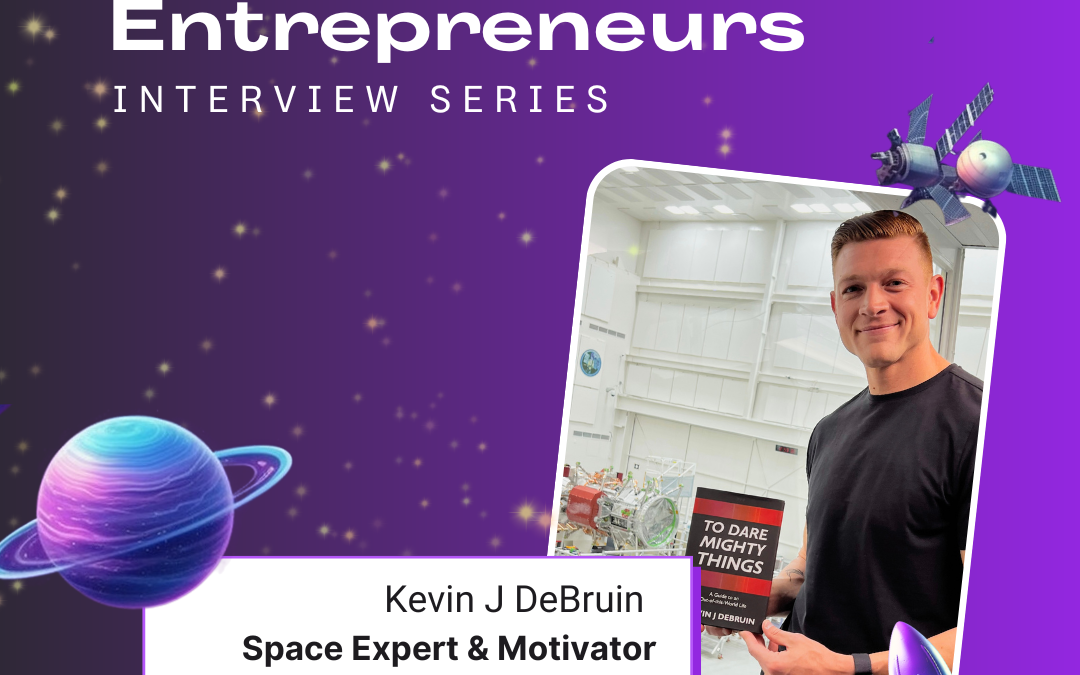I am an expert in NASA’s mission & spacecraft design process. I’ve pretty much achieved every goal I’ve ever set and share my space & success knowledge to educate and inspire others. I like to crafts engaging stories to share my expertise with the world in an easy to understand and relatable way. From the best place to find alien life in our solar system to overcoming obstacles to achieve your dreams, I aim to motivate all those I interact with.
I worked as a Systems Engineer at NASA’s Jet Propulsion Lab (JPL) in Pasadena, CA. My main focus was on the Europa Lander Mission Concept as a Flight Systems Engineer as well as more than 30 advanced mission concepts exploring the universe as a member of TeamX, TeamXc, and A-Team. I am an expert in Model-Based Systems Engineering (MBSE) and offer a training course Fundamentals of MBSE with OpenX Education. After NASA , I worked for a short while full time at The Aerospace Corporation as a Senior Systems Engineer where I launched two 1.5U CubeSats into Earth orbit. I now work periodically with The Aerospace Corporation as a Senior Member of their Technical Staff.
What would you say is the biggest challenge facing the space industry today?
I think the biggest challenge facing the space industry today is global access to opportunities and information. When people think about Space companies and opportunities, they think the United States with NASA & private companies, but there is so much of the world that doesn’t have exposure to or access to the education and resources to pursue a space endeavor or even get involved in the space industry. Where we are missing out on a variety of different perspectives, backgrounds, and motivated individuals to contribute to helping humanity via the space industry and changing the world for the better. I was fortunate to join PASSAGE, a nonprofit founded by filmmaker and pilot Lee Giat, on a 6-week journey throughout the Caribbean and South America delivering school supplies, science experiments, and telescopes to underprivileged communities. 99% of the individuals we encountered never looked through a telescope. Most were interested in space and science, but lacked resources to learn more about it due to connectivity or insufficient educational tools. There is a blind spot to this. There seems to be a lot of focus on “space access for everyone” but that is said in the mind of being a space tourist. We need to bring awareness to the need for access to space information and opportunities for everyone, and I mean everyone on this planet. An effort towards this I have personally been involved with is the Wright of PASSAGE documentary series.
Can you tell us about a particularly innovative or unexpected use of space technology that you’ve seen?
Space exploration and space technology are literally in our everyday life. They make our life possible. We use GPS, we use credit cards, and we all look at weather forecasts. However, the main important aspect is that without space technology we literally die and a lot of people don’t know how important and impactful all the things that are going on in outer space are. The things that have been developed in the Apollo program to now are things that actually allow us to live safely and continue on living.
One of the stories I really like to highlight is about a man named George Grace. George Grace is an artist living in Buffalo, NY. A story by Ivanhoe describes George’s use of a cancer treatment known as Photodynamic Therapy, or PDT. This treatment is actually medication that is activated by LED lights. This LED activation technology stems from using LEDs to grow plants on the International Space Station. This technology has also stemmed into wound healing and acne treatment. George literally owes his life, being cancer free, to space technology that has been brought down to Earth. I connected with George a few years ago and he was happy to report that he’s still cancer free and enjoying his life on this Earth.
Can you share your thoughts on the importance of celebrating and promoting space entrepreneurship during events like World Space Week?
When I was growing up with an interest in working in the space industry, there were only a handful of options for a career – the big government agencies. Nowadays there are thousands of companies around the world with an opportunity to be involved in the space industry. And we have space entrepreneurs to thank for that. People that saw an opportunity or a gap and worked to create something new. More and more space entrepreneurs are appearing each day, whether that’s someone inside an organization realizing they want to go off on their own, or a young student wanting to chase their own dreams. The possibilities are no endless from starting a cubesat company or space technology development to science communication and space employee consulting and coaching. Space entrepreneurship is not just creating the next SpaceX, it’s about anyone who’s making an impact in the space agency. Highlighting those artists who bring the space data and stories to life as well as those who coach/mentor space professionals so they can be their best selves. They say it takes a village to raise a child, well I say it takes all S.T.E.A.M. walks of life to elevate the space industry.

